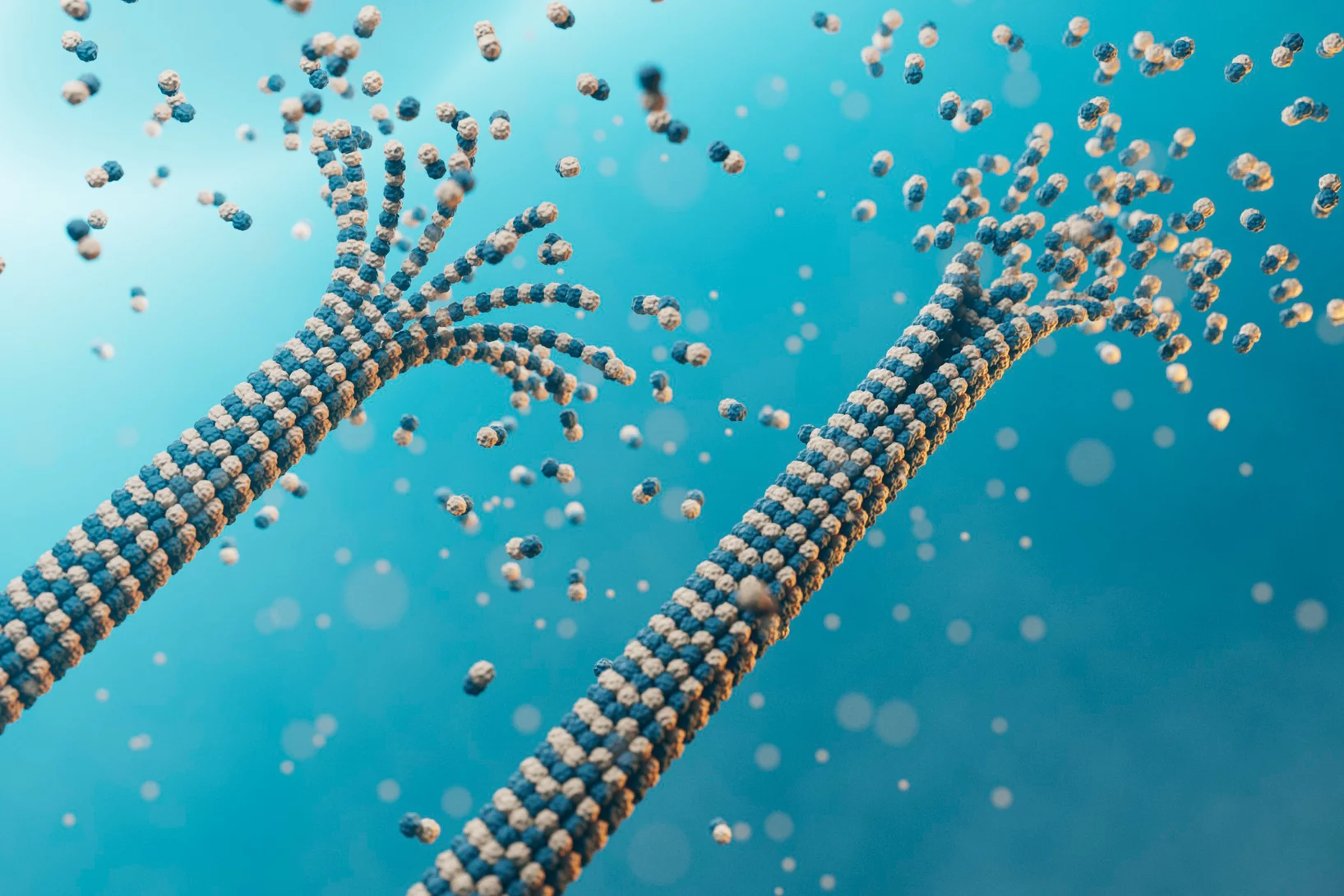Das PSI bietet mit seiner weltweit einmaligen Forschungsinfrastruktur einzigartige Möglichkeiten für die nationale und internationale Spitzenforschung.
Die Forschungsschwerpunkte des PSI
Aktuelle Highlights aus unserer Forschung
Neues Verfahren für stabile und langlebige Festkörperbatterien
PSI-Forschende haben ein neuartiges Verfahren entwickelt, das Festkörperbatterien widerstandsfähiger und langlebiger macht.
Laser zeichnet magnetische Landschaften nach Mass
Forschende am PSI fanden eine überraschend günstige und schnelle Methode, um magnetische Materialien lokal zu verändern.
Wie sich Mikrotubuli an der zellulären Signalverarbeitung beteiligen
Forschende des PSI haben auf molekularer Ebene untersucht, wie das Zellskelett Befehle innerhalb der Zelle weiterleitet. Ihre Ergebnisse könnten der Medizin neue Möglichkeiten bieten, bei Fehlfunktionen im Organismus einzugreifen.
Möchten Sie unsere Anlagen für Ihre Forschung nutzen?
Erfahren Sie mehr über unsere Grossforschungsanlagen und weiteren Forschungseinrichtungen.
PSI Center & Labs
Unsere Forschungs- und Servicezentren betreiben international anerkannte Spitzenforschung in den Natur- und Ingenieurwissenschaften und stellen der Wissenschaft wie auch der Industrie hochkomplexe Grossforschungsanlagen für eigene Forschungsvorhaben zur Verfügung.
Scientific Highlights aus unseren Centren
Chiral phonons in polar LiNbO3
Resonant inelastic x-ray scattering reveals that lattice vibrations can be chiral in a polar material, with phonons having opposite handedness depending on their direction in momentum space.
Uncovering Hidden Phases in 3D-Printed Fusion Steels
3D synchrotron X-ray mapping uncovered unexpected internal phase structures in laser-printed steels, showing how processing controls what we cannot see.
2nd GIF Molten Salt Reactor workshop at PSI
On 10 December 2025 the 2nd GIF Molten Salt Reactor workshop took place at PSI












